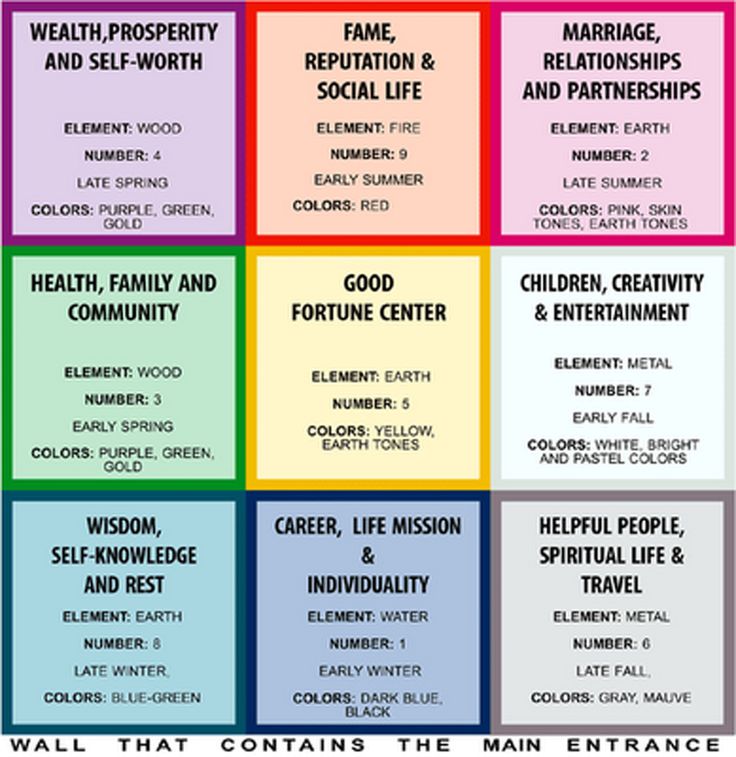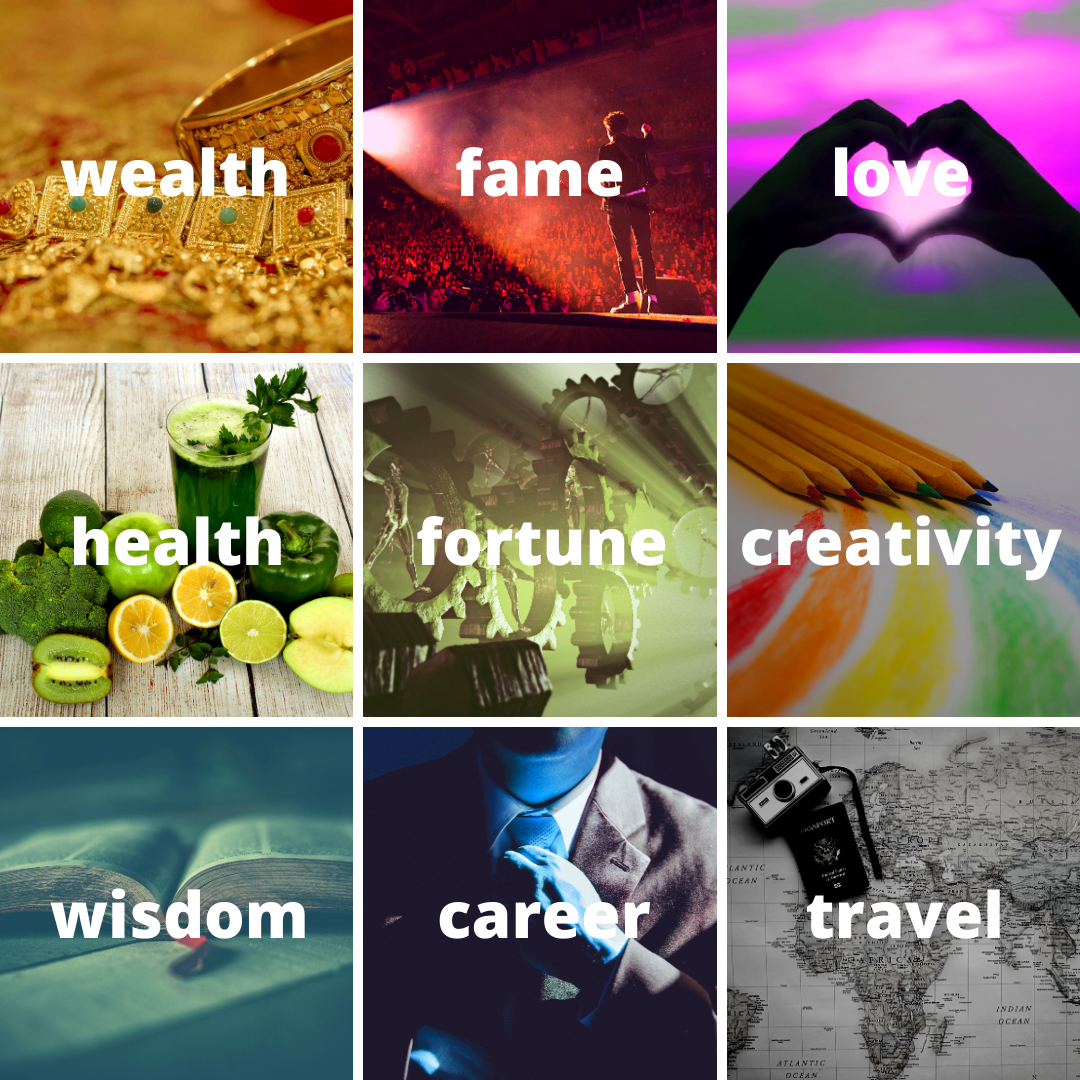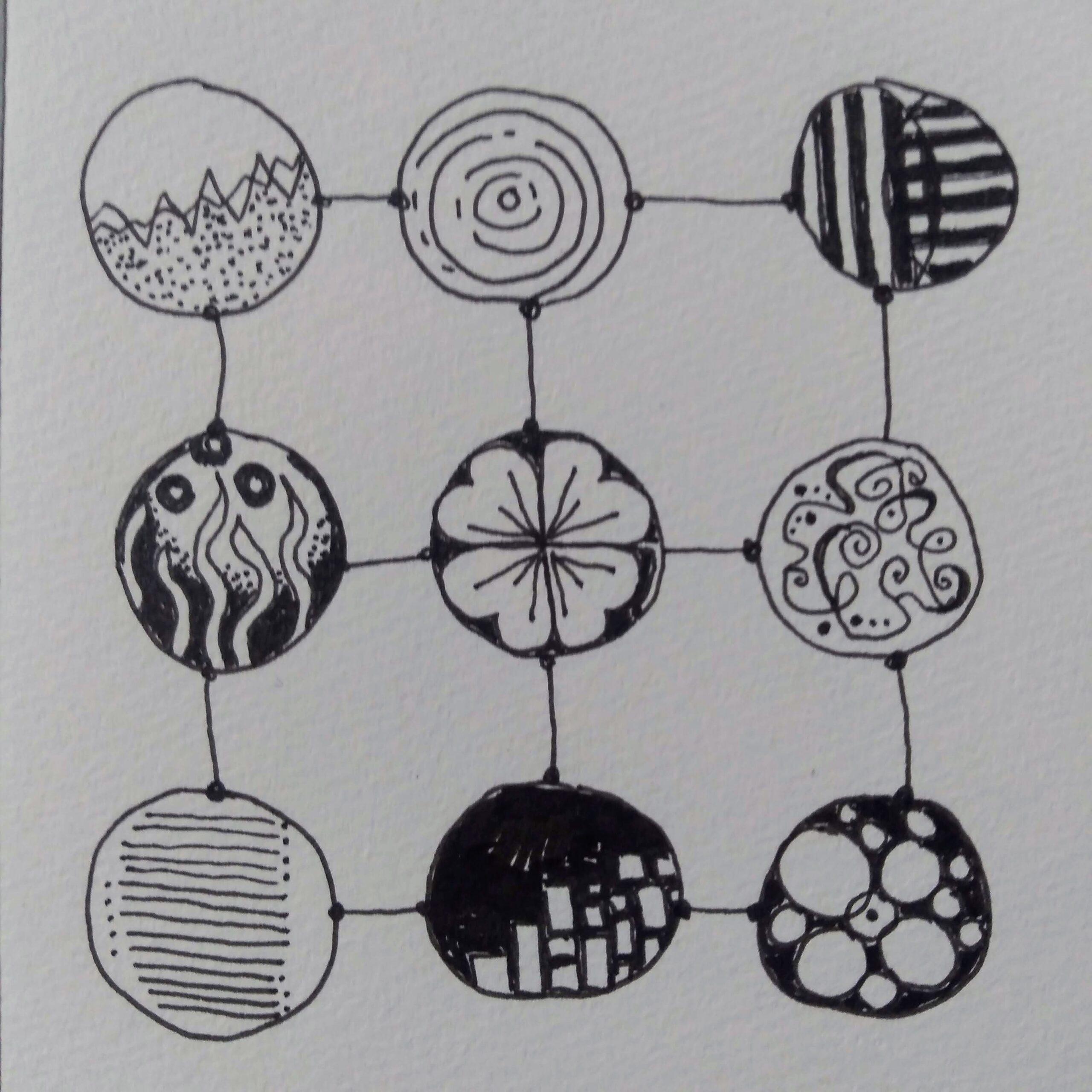


Creating a vision board is a rewarding way to concretely visualise your dreams. But it can be quite intimidating to look at a blank piece of paper and think “What do I want and what are my dreams?”
So when I create vision boards, I use a structure I learned years ago at a retreat with Jason Hancock and Diana Tsuruda – start with a tic-tac-toe grid where each square takes a feng shui category. And then, it becomes a little bit easier to imagine what you might want from life in that category. Constraints help creativity flourish.

Traditional grid
This is a classic feng shui layout. Normally feng shui principles are applied to rooms or physical spaces to help the energy flow smoothly. When you have yoru home or room “feng shui’d” you might carefully place objects of certain colors or materials to attract or repel various energies.
As you can see in the image, each square has multiple themes and colors and is also associated with a season, a number, and an element. In the original Chinese practice, there are also cardinal directions associated with each.
Feng shui is quite fascinating; there is a lot of detail to discover.
Simplified for dreaming
As a framework for visions boards, the traditional grid’s pretty complicated, so before I begin drawing, I simplify it. I choose just one attribute from each square and I make note of the color I want to use, too.
I might choose Wealth and this time but next time I do a vision board, it could be Self-worth. This diagram shows the way I simplified it for my current vision board. It is much easier to understand this way. Normally, I do not create such an elaborate graphic when I am preparing my board, I simply jot down the words in a little grid on a scratch paper. I only need to jog my memory as I draw.


The finished artwork
And for this vision board, here is what I drew. Nothing is representational, but everything has meaning to me.
I am a big fan of abstracting ideas and emotions but this vision board would have worked just as well if I’d drawn very specific images. I wasn’t sure how to represent “draw with abundant exuberance,” “create new patterns together” or “build a solid foundation for my career” and so I abstracted them into shapes.
In this case, I used circles instead of squares – no rules! and I decided not to add color, but it would look lovely with spot colors, too.
Why draw and not collage?
Drawing brings your real self and your subconscious to the process of envisioning. Taking time to put pen to paper allows your mind to wander and to discover things about your own dreams that magazine clippings and other people’s artwork never can.
I have certainly done lots of collaged vision boards – physical paper ones and digital ones, too. They are satisfying and they “come true” just fine.
The ones I draw myself are more specific to my desires and visions for the future. While I draw them, I learn about myself in a way I never do when flipping through magazines and search results.
When you focus your intent on something in this way, your subconcious gets the message and starts heading you in the right direction to bring your visions to life.
Be assured as you embark on your own hand-drawn vision board that whatever meaningful marks you make on the page are the right ones; you can draw stick people, or you lay down blobs of color, or you can draw a photoralistic image. It’s all good.
